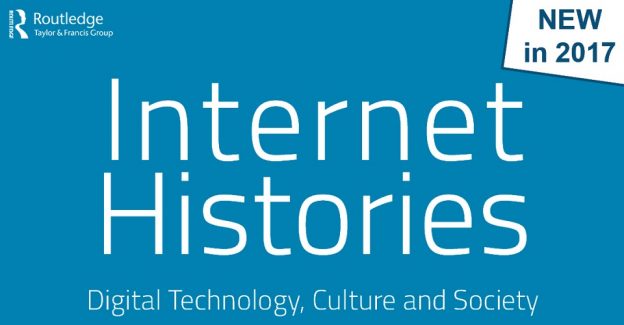KUTSU | INVITATION
Suomi / English
RUUKKU 9: YHTEISMUOTOUTUMISEN ESTETIIKKAA.
Uusmaterialismeja taiteissa ja taiteentutkimuksessa
Taidetta koskevassa tutkimuksessa on 1990-luvulta lähtien vähitellen kyseenalaistettu tutkimusmalleja, jotka ensisijaistavat representaation, diskurssin ja tekstuaalisuuden käsitteitä. Samanaikaisesti on ryhdytty kehittämään vaihtoehtoisia lähestymistapoja, jotka painottavat myös taiteenlajien ja taiteellisten käytäntöjen aineellisia, aistimellisia ja esteettisiä ulottuvuuksia irtaantuen kuitenkin formalistisista ja taiteen autonomiaa korostavista perinteistä. Yksi keskeinen näitä lähestymistapoja kehittelevä teoreettis-metodologinen suuntaus on uusmaterialismi. Tutkimuksellisten taustojen moninaisuudesta huolimatta uusmaterialismeja yhdistää paneutuminen niin inhmillisen kuin ei-inhimillisen materian aktiiviseen prosessuaalisuuteen ja vuorovaikutuskykyihin. Uusmaterialismeja luonnehtiikin laaja-alainen kiinnostus materiaalisuuksiin inhimillisestä ruumiillisuudesta digitaalisiin teknologioihin, ihmisen ja ei-inhimillisten elämänmuotojen suhteisiin ja aineellis-sosiaalisiin ympäristöihin. Näiden tarkastelemiseksi tarvitaan sekä uusia käsitteitä että ontologisten ymmärrystapojen päivittämistä.
Tieteenfilosofi Karen Baradin alun perin kehittämä yhteismuotoutuminen (intra-action) on yksi uusmaterialistista tutkimusta vaikutusvaltaisesti muokanneista käsitteistä. Sen sijaan, että tämä käsite ehdottaisi materian toimivan itseriittoisesti, se korostaa aineellisuuksien ja diskurssien, luonnon ja kulttuurin sekä inhimillisen tiedon ja ei-inhimillisten prosessien keskinäistä ja suhteista muovautumista. Täten yhteismuotoutuminen kytkeytyy suhdeperustaiseen ontologiaan. Juuri ontologisen lähtökohtansa takia yhteismuotoutumisen käsite voi edesauttaa ajattelua ja tekemistä paitsi tieteentutkimuksessa myös monilla taiteen- ja siihen kietoutuvan tutkimuksen aloilla.
Kutsumme erikoisnumeroomme ekspositioita ja puheenvuoroja, jotka tutkailevat, arvioivat ja kehittävät yhteismuotoutumisen käsitteen potentiaaleja poikki taiteiden, taideprosessien ja niihin liittyvien tutkimuskäytäntöjen. Näin kutsumme osallistumaan ajankohtaiseen keskusteluun siitä, miten uusmaterialistinen ajattelu voi muovata tutkimuksellista ja/tai taiteellista työtä: niiden metodeja, tekniikoita, kokemuksellisuutta ja suhteita.
Ekspositiot ja puheenvuorot voivat tarttua esimerkiksi seuraaviin kysymyksiin:
Millaisia yhteismuotoutumisia voidaan havaita nykytaiteen käytännöissä elokuvasta ja videosta sekä äänestä ja musiikista esitys- ja kuvataiteisiin, arkkitehtuuriin ja kuratointiin?
Millaisia metodologisia ymmärryksiä ja tekemisen tekniikoita yhteismuotoutuminen voi inspiroida? Entä miten se muokkaa käsitteellistyksiä taiteen toiminnallisuudesta, vaikutuskyvyistä ja poliittisuudesta?
Miten yhteismuotoutumisen käsite ja logiikka vaikuttavat estetiikkaa koskeviin ymmärryksiin? Miten taidekäytännöt puolestaan vaikuttavat tähän käsitteeseen?
Kuinka yhteismuotoutuminen haastaa ja laajentaa aiempia käsityksiä inhimillisestä toimijuudesta sekä taiteilijan ja tutkijan paikantumisesta?
—
Pyydämme teemaamme liittyviä ekspositioita ja puheenvuoroja RUUKKU 9 -numeroon. Numeron toimittavat Marie-Luise Angerer, Katve-Kaisa Kontturi, Milla Tiainen ja Tero Nauha. Numero liittyy eurooppalaisen uusmaterialismi-verkoston luovien taiteiden työryhmän toimintaan. Katso http://newmaterialism.eu.
Ehdotukset tai luonnokset tutkimusekspositioiksi pyydetään laatimaan RC luetteloon http://www.researchcatalogue.net/. Huom. luettelon käyttö edellyttää käyttöoikeuksien hankkimista ja rekisteröitymistä (ks. kohta “register”). Ehdotukset tulee lähettää RC luettelon kautta (kohdasta “publish”, “submit” ja “Ruukku”) 12.6.2017 mennessä. Pyydämme myös lähettämään tiedon ehdotuksesta samalla sähköpostitse osoitteisiin angerer@uni-potsdam.de, katkon@utu.fi ja milla.tiainen@helsinki.fi, tero.nauha@gmail.com. Ilmoitamme valinnoista kesäkuun loppuun mennessä ja deadline valmiille ekspositioille on 15.8. 2017.
—
RUUKKU on vuonna 2013 toimintansa aloittanut monialainen, vertaisarvioitu taiteellisen tutkimuksen kausijulkaisu, joka käyttää alustanaan monimediaisen julkaisemisen mahdollistavaa kansainvälistä taiteellisen tutkimuksen julkaisualustaa ja tietokantaa Research Catalogue (RC). RUUKUN julkaisukielet ovat suomi, ruotsi tai englanti. Katso http://ruukku-journal.fi/fi.
RUUKKU 9: AESTHETIC INTRA-ACTIONS:
Practising New Materialisms in the Arts
Since the 1990s, art and cultural theories have increasingly questioned models of research that prioritise notions of representation, discourse and text. Many approaches have embraced an alternative or parallel orientation towards re-appreciating the material, sensory, and aesthetic dimensions of the arts. One of the forces shaping this shift comprises theorisations referred to as new materialisms. Developers of new materialist thinking have formulated fresh concepts and ontological positions that foreground the activities and significance of various materialities: human, pre-individual as well as non-human. New materialist matters of concern thus range from human bodily processes to machines, other than human life forms, and at once naturally and socially shaped milieus.
In the context of these concerns, one influential concept has recently been intra-action introduced by philosopher of science Karen Barad. Instead of positing materiality as a self-contained sphere, this concept stresses the mutually constitutive relationships between materialities and discourses, nature and culture, and human knowledges and non-human processes. Because of the relational ontology it advocates, the concept of intra-action can reorganise research approaches beyond Barad’s location in science studies, hence affecting also the practices and theories of the arts.
The aim of the Ruukku 9 is to examine the uses and potentialities of intra-action across different areas of the arts, artistic processes and research practices related to the arts. We also hope to contribute to the urgent task of translating new materialist ideas into actual methodological, technical and analytical practices – that is, into ways of doing art and research.
More specifically, this volume explores for example the following questions:
What kinds of intra-actions can be found in the practices and experiences of contemporary arts spanning from film, media, sound and music to performance, visual arts, architecture and curating?
What methodological insights, techniques of doing, and further concepts can intra-action inspire in artistic research and art studies?
How can aesthetics be reconsidered and studied with the concept of intra-action and with new materialist modes of thinking?
How to reconsider the situatedness of the artist and/or researcher in relation to the notion of intra-action?
..
We invite theme-related research expositions and contributions for the 9th issue of RUUKKU. The issue is edited by Marie-Luise Angerer, Katve-Kaisa Kontturi and Milla Tiainen, who co-chair the New Materialism embracing Creative Arts working group at the European new materialist network, and Tero Nauha, who’s part of the RUUKKU editorial board.
We ask you to submit your proposals or drafts for research expositions and other contributions in the RC catalogue at https://www.researchcatalogue.net. Note! The catalogue requires user rights and registration (see ‘register’). Please submit your proposals via the RC catalogue (‘publish’, ‘submit’, and ‘Ruukku’) no later than 12 June 2017, and inform the co-editors about your proposal via email (angerer@uni-potsdam.de, katkon@utu.fi ja milla.tiainen@helsinki.fi, tero.nauha@gmail.com). We will let you know about the results by the end of June. For accepted proposals the deadline for completed submissions is 15 August, 2017.
—
RUUKKU is a multidisciplinary, multilingual, peer-reviewed journal on artistic research launched in 2013. This biannual journal is published and supported by the University of the Arts Helsinki, Aalto school of Arts, Design and Architecture and the Faculty of Art and Design at the University of Lapland, with a particular focus on multi-lingual publication. The primary languages of publication are Finnish, Swedish and English. (http://ruukku-journal.fi/en)



